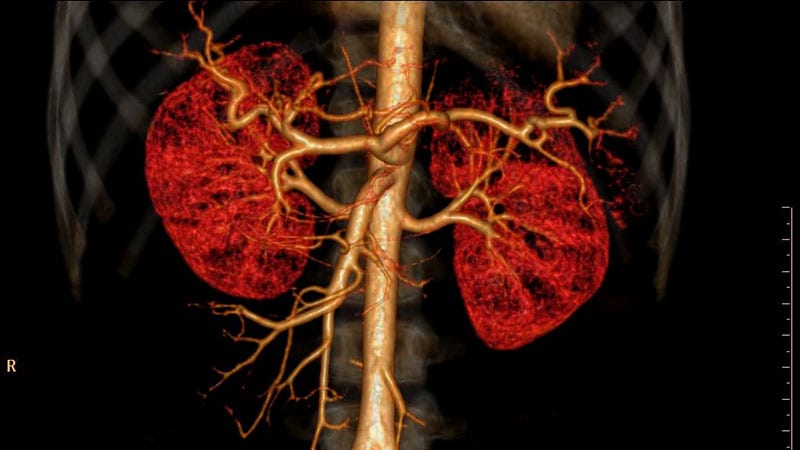TOPLINE:
For trauma patients with exsanguinating torso hemorrhage, resuscitative endovascular balloon occlusion of the aorta (REBOA) did not reduce mortality, and may have increased 90-day mortality, when added to standard hemorrhagic management in a randomized controlled trial.
METHODOLOGY:
-
REBOA is a novel technique whereby a percutaneously inserted balloon is inflated in the aorta. The UK-REBOA trial is the first randomized controlled trial to examine the potential clinical effectiveness of REBOA for the management of exsanguinating hemorrhage.
-
The trial enrolled 90 patients with confirmed or suspected life-threatening torso hemorrhage whow ere treated at 16 major trauma centers in the UK; 46 were randomly assigned to receive REBOA and standard care, and 44 were assigned to receive standard care alone.
TAKEAWAY:
-
All-cause mortality at 90 days (primary outcome) was 54% in the REBOA group, vs 42% in the standard care group (odds ratio [OR] 1.58; 95% credible interval. 0.72 – 3.52); the posterior probability increased odds of death with REBOA was 86.9%.
-
Among 10 secondary outcomes, the ORs for mortality and the posterior probabilities of an OR >1 for 6-month and in-hospital mortality, as well as mortality at 3, 6, and 24 hours, were all increased in the REBOA group.
-
There were more deaths due to bleeding with than without REBOA (8 of 25 patients [32%] vs 3 of 18 patients [17%]); most occurred within 24 hours.
IN PRACTICE:
“REBOA is a challenging and complex procedure to perform, especially in patients who are at imminent risk of dying. The trial clearly did not show the expected benefits but is incredibly important because it will prompt clinicians and trauma centers to reevaluate whether they should be using REBOA in emergency departments,” co-chief investigator Jan Jansen, PhD, with the Center for Injury Science, University of Alabama at Birmingham, said in a statement.
SOURCE:
The trial was carried out by Jansen and colleagues on behalf of the UK-REBOA Study Group and was published online October 12 in JAMA.
LIMITATIONS:
The small sample size reflects the relative infrequency and etiology of exsanguinating hemorrhage in the UK, where blunt trauma predominates, and most penetrating trauma stems from stabbings rather than gunshot wounds. The results may therefore not translate to other settings. There were some baseline imbalances between the two groups.
DISCLOSURES:
The trial was funded by the National Institute for Health and Care Research Health Technology Assessment Program. Jansen reported receiving personal fees from CSL Behring, Cellphire, and Infrascan and grants from CSL Behring, Infrascan, and RevMedX. A complete list of author disclosures is available with the original article.
For more news, follow Medscape on Facebook, X, Instagram, and YouTube.
Source: Read Full Article
